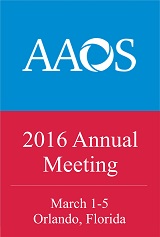
AAOS 2016: Osteochondral autograft vs. allograft plugs for osetochondral talar dome lesion

AAOS 2016: Osteochondral autograft vs. allograft plugs for osetochondral talar dome lesion
Comparison of Osteochondral Autografts and Allografts for Treatment of Talar Osteochondral Lesions
CONFERENCE ACE REPORTS
This ACE Report is a summary of a conference presentation or abstract. The information provided has limited the ability to provide an accurate assessment of the risk of bias or the overall quality. Please interpret the results with caution as trials may be in progress and select results may have been presented.
Synopsis
40 patients with large or recurrent osteochondral lesions of the talar dome (OLT) were randomized to receive treatment with either osteochondral allograft or autograft plugs. The purpose of this study was to determine if either graft procedure was associated with significantly improved pain, function, and radiographic measures when assessed after final follow-up. Results demonstrated no significan...
To view the full content, login to your account,
or start your 30-day FREE Trial today.
FREE TRIAL
LOGIN
Forgot Password?
Explore some of our unlocked ACE Reports below!

Learn about our AI Driven
High Impact Search Feature
Our AI driven High Impact metric calculates the impact an article will have by considering both the publishing journal and the content of the article itself. Built using the latest advances in natural language processing, OE High Impact predicts an article’s future number of citations better than impact factor alone.
Continue



 LOGIN
LOGIN

Join the Conversation
Please Login or Join to leave comments.